Email replies from your customers can be found in the Incoming Emails tab on the Communications screen.
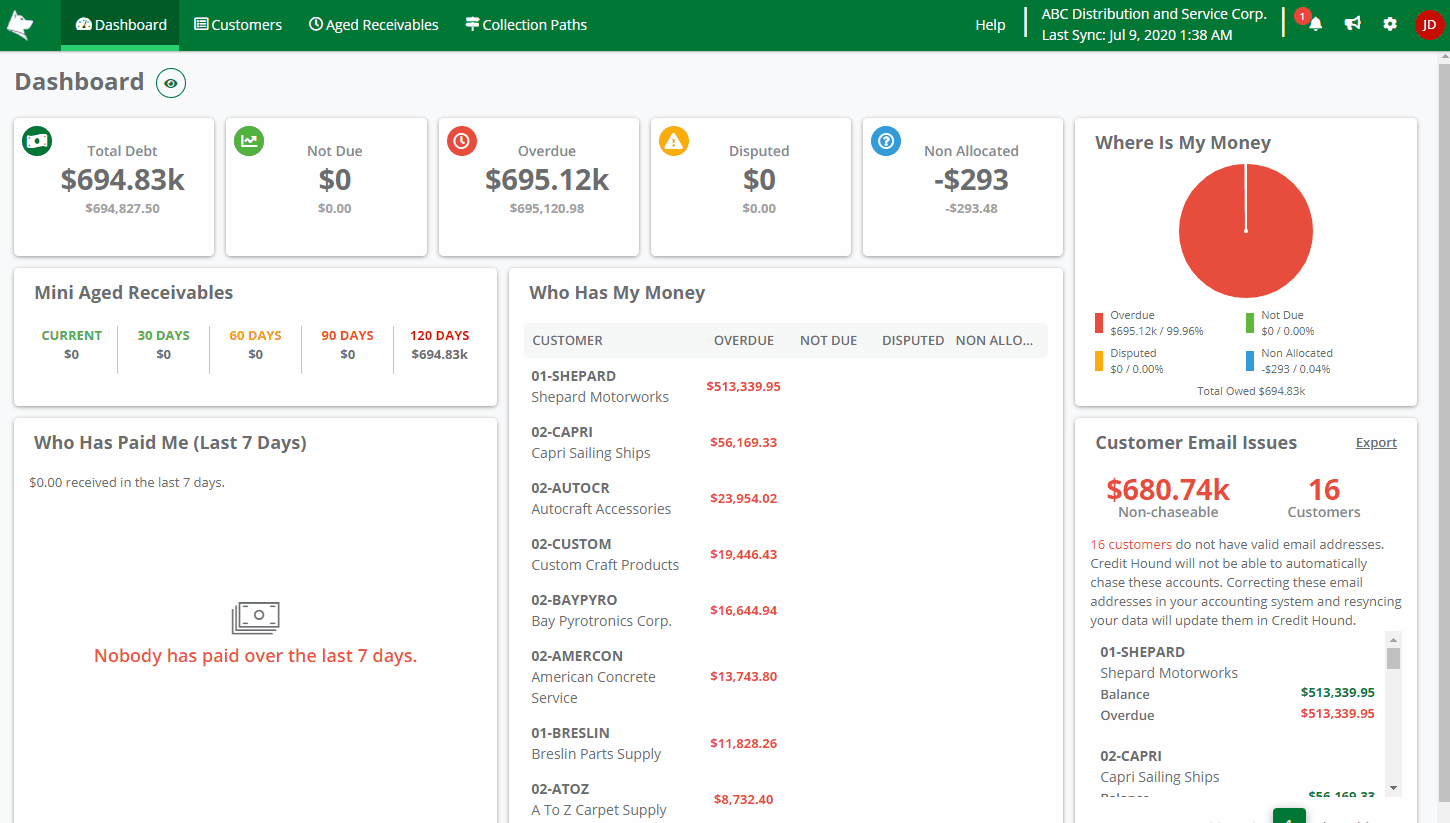
Clicking the bell icon in the top-right menu bar will navigate to the Communications screen. The bell icon also shows the number of unread emails you have. When emails have been read, the icon count will decrease accordingly.
Incoming Emails Grid
In the Communications screen, the Incoming Emails grid displays the list of emails received from your customers.
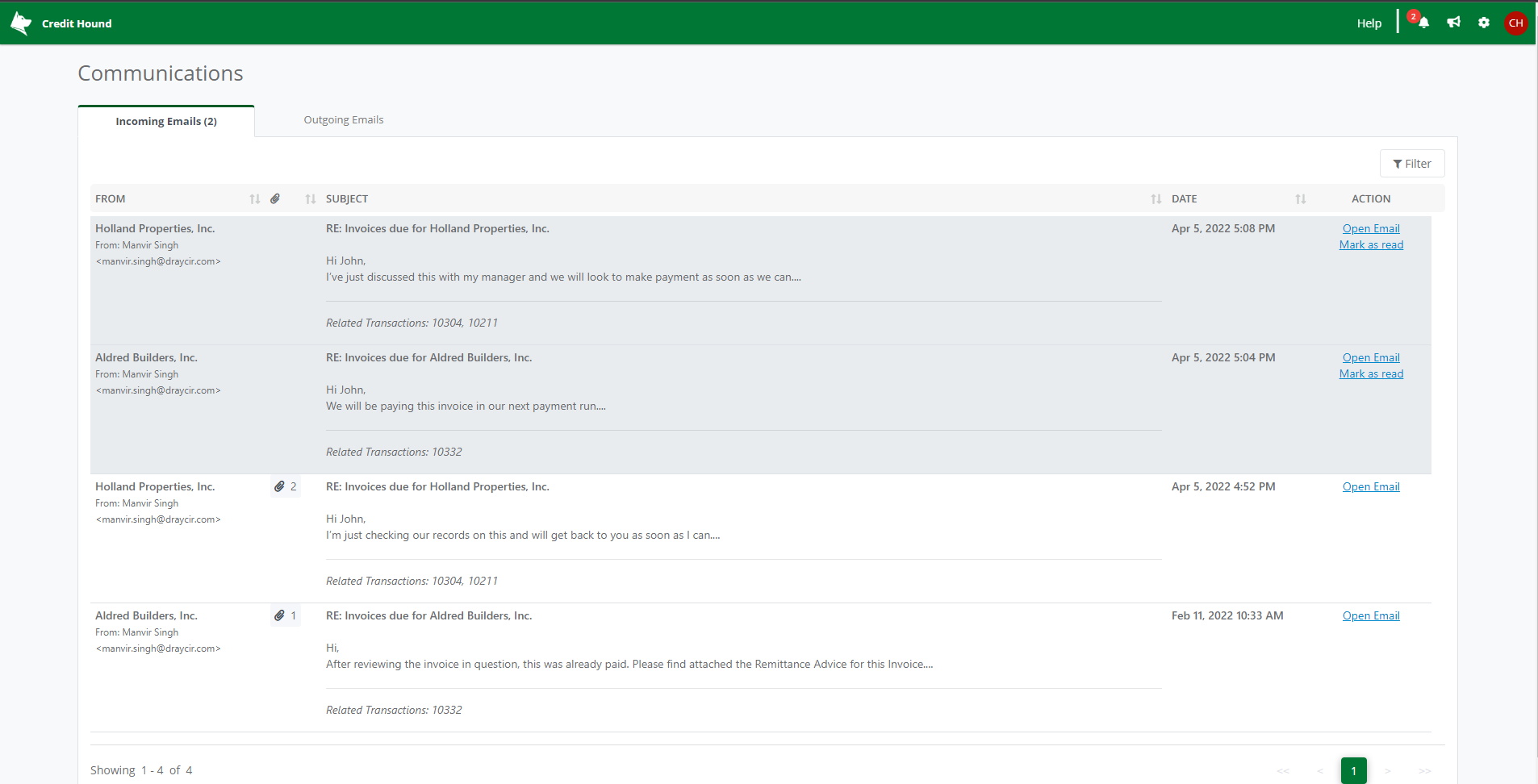
Note: Any unread emails will be displayed in a grey background color. Once read, the background color will change to white.
The columns in the grid are as follows:
| Column Name | Description |
|---|---|
| From | Shows the customer, name and email address that the email has come from. |
| Company | If you have more than one company (dataset) on your account, this column will appear showing the Company associated with the email. |
| Subject | Details the subject line and the first few lines of the email body text. |
| Date | The date the email was sent. |
| Action | Contains the actions Open Email which opens the details of the email, Mark as Read and Archive Emails. Once an email has been read, the Mark as Read action is no longer available for that email. See Archived Emails for more information on archiving and restoring emails. |
Sorting
Clicking on the Date column name will sort the email list in ascending order (unless this column is already in ascending order, then it will change the sort to descending order). Clicking on the Date column name a second time will sort it in descending order (unless it is already in descending order, then it will switch it to ascending order).
The small up/down arrows icon is displayed on the current sort column. If the column is sorted in ascending order, then the arrow pointing up is highlighted black. If the column is sorted in descending order, then the column pointing down is highlighted black.
Filtering
The Incoming Emails grid has very powerful filter options available. Data in the list can be filtered by clicking the Filter button located to the top-right of the grid. This will enable the filter boxes underneath the column names.
Click inside the relevant filter box and type in the value you want to filter by. Clicking the drop-down arrow to the right of each filter allows you to choose how that filter will be applied.
 Filtered Incoming Emails
Filtered Incoming Emails
Clicking on the filtered column for Date will bring up a date picker.
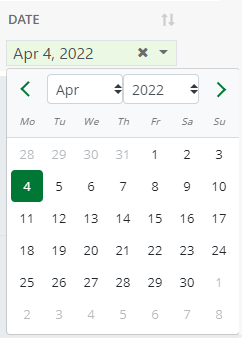
Select the date you want to filter on. You can also combine this with the filter option by clicking the drop-down arrow to the right. For example, After April 4, 2022 will list emails after this date.
Filtering by Company
If your account has multiple companies in Credit Hound Cloud, an extra Company column appears in the Incoming Emails grid, displaying the associated company for each email. By default, emails from all companies are shown.
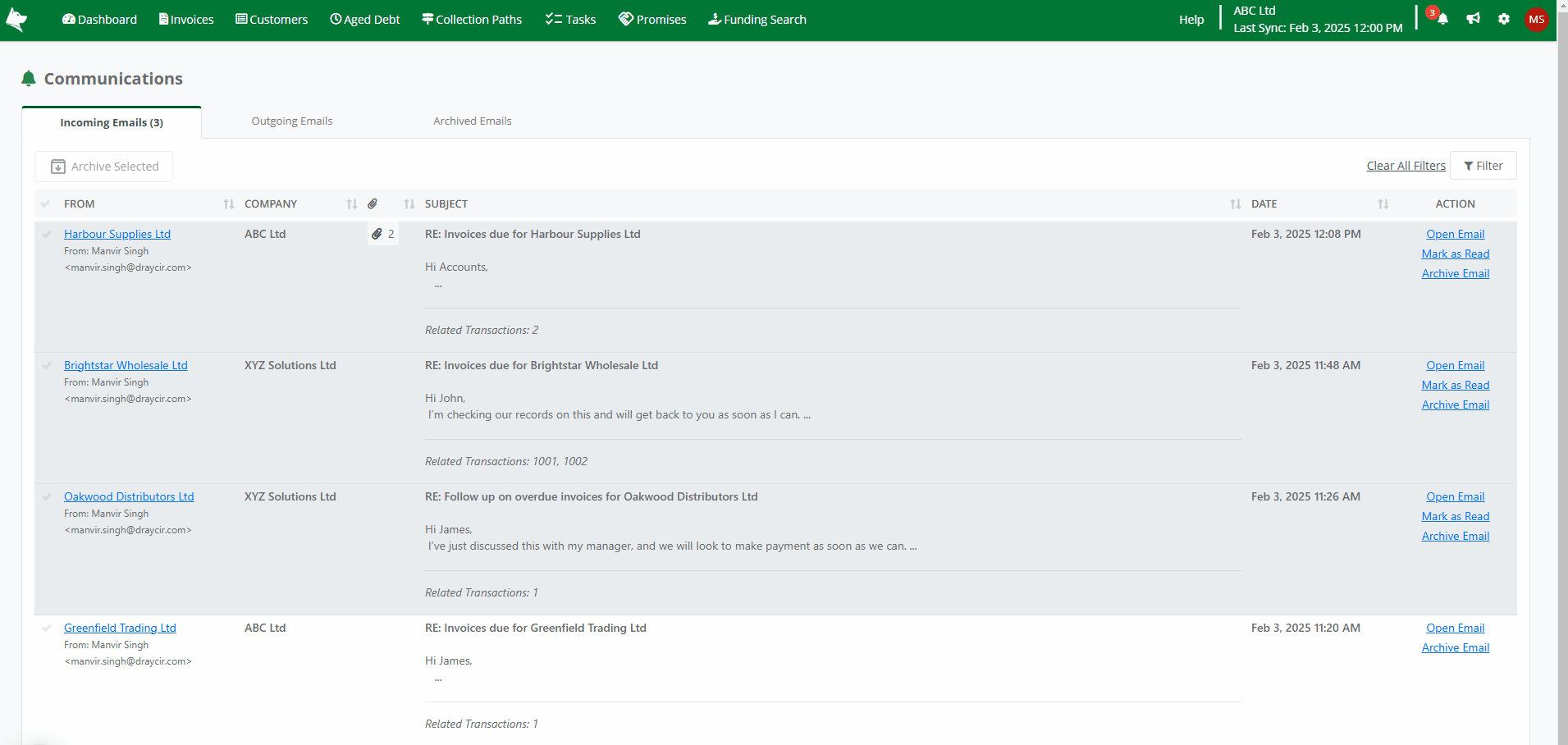 Filter Incoming Emails by Company
Filter Incoming Emails by Company
To filter by company:
- Click the Filter button located to the top-right of the grid. This will enable the filter boxes underneath the column names.
- In the Company column, select one or more companies to refine the results.
- You can also leave the filter unselected to view emails from all companies.
You can find further information on general filtering of grids at Sorting, Filtering and Exporting.
Reading Emails
To open up an email, click anywhere on the row or click on the button in the Action column and select Open . A dialog box will appear with full email details.
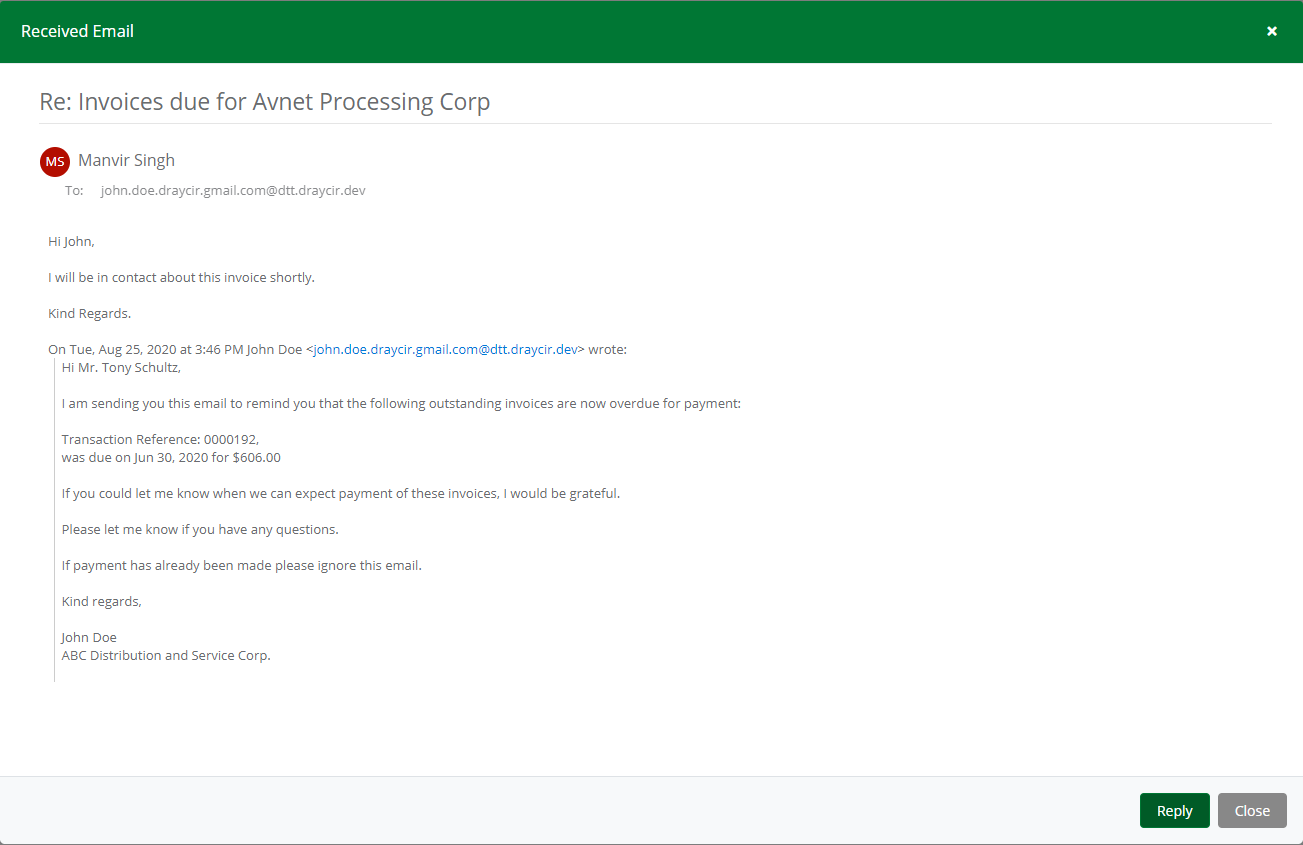
Note: These emails will also appear in the Activity View on the Customer Screen.
Replying to Emails
- Reply to an email by pressing the Reply button.
- The Send Email dialog box appears.
- Type in your reply. You can insert fields using the Custom Fields button.
- Click Send.
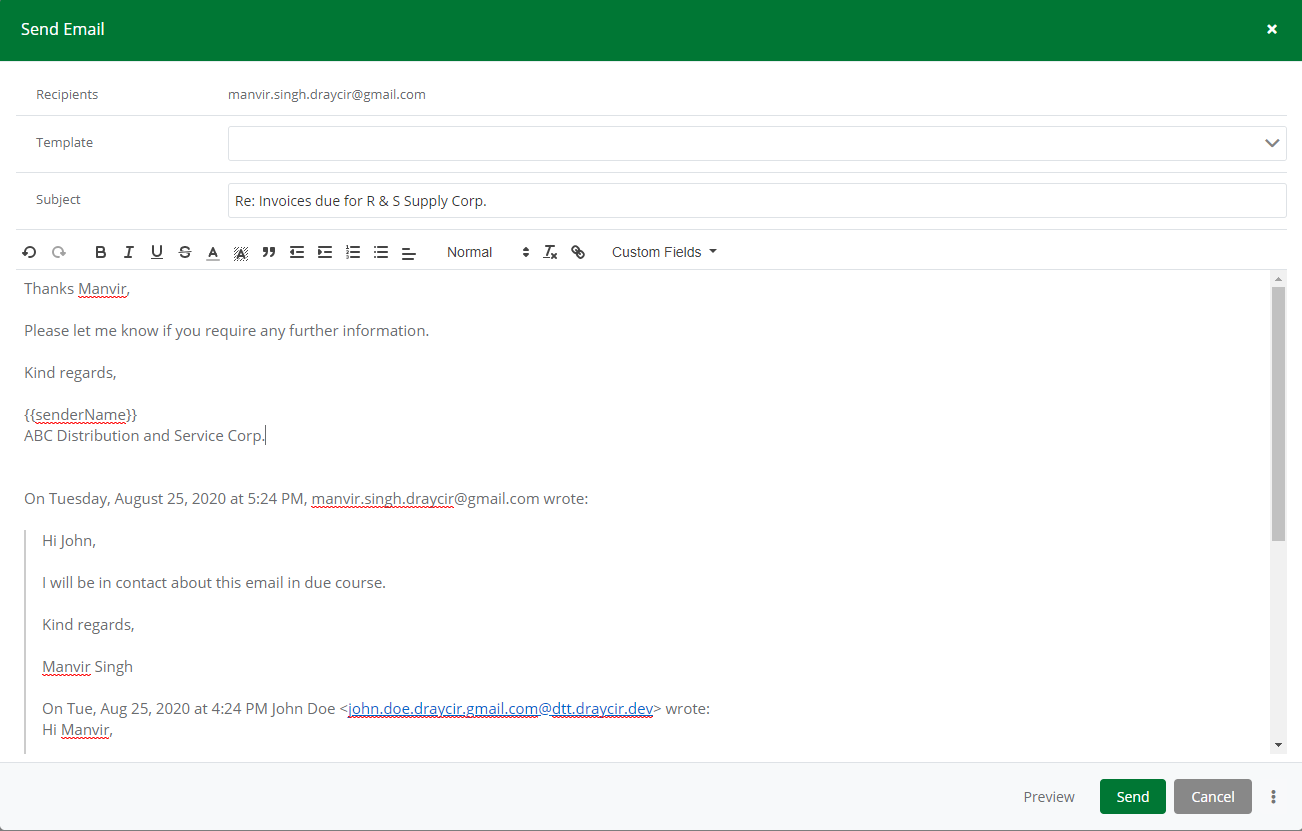
Note: If you use any Custom Fields in the reply, the Related Transactions fields, such as the Transaction Ref, will be populated with the value from the original email thread.
Forwarding Emails
- Open an email by clicking on the Open Email link in the Action column.
- The ReceivedEmail dialog box appears.
- Click Forward.
- The email editor opens allowing you to add any details above the forwarded email.
- Click Send to forward the email to other recipients.
Incoming Email Attachments
Email replies from your customers may include attachments. For example, your customer may have replied to your email advising that payment has been made and attached a copy of their Remittance Advice.
If an incoming email has an attachment, you can see an indicator next to the From column of the Incoming Communications grid, showing the number of attachments on the email.
 Attachment Icon for Received Email
Attachment Icon for Received EmailWhen opening the email, if there are attachments that have been sent by your customer, you can view the filename and extension towards the top of the email.
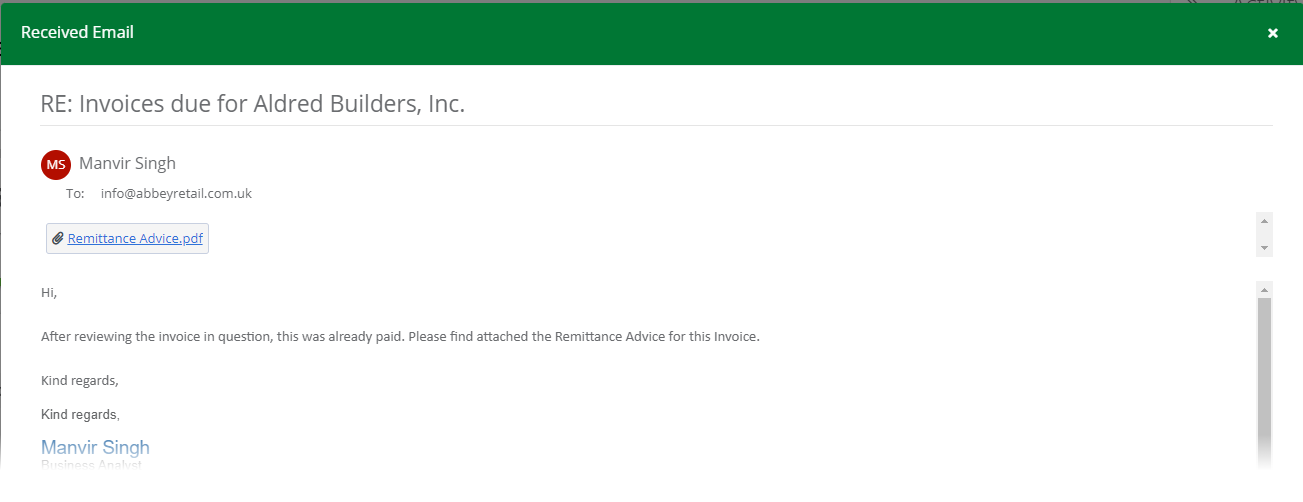 Received Email with an Attachment
Received Email with an AttachmentClick on the attachment name to download the attachment to your computer.